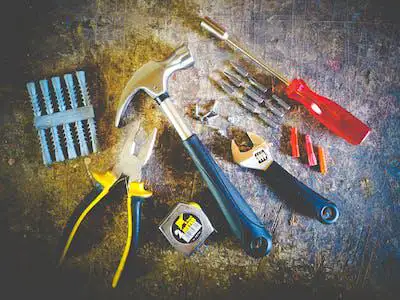Visible Signs of Distress:
1.Shingle Woes: Take a good look at your shingles. Curling, cracking, or missing shingles are all red flags. Curling shingles indicate age and deterioration, while cracks expose the underlayment to the elements. Missing shingles leave gaping holes that invite leaks and critters.
2.Granule Fallout: Inspect your gutters and downspouts. Finding an excessive amount of shingle granules is a sign that your roof's protective layer is wearing thin. This can lead to premature aging and water infiltration.
3.Stained Ceilings and Walls: Water stains on your ceiling or walls inside your home are undeniable evidence of a leak. Don't ignore these – act fast to prevent further damage and mold growth.
4.Sagging and Drooping: A sagging or drooping roofline is a serious structural concern. It indicates weakened support beams or moisture damage that could lead to a partial or even complete roof collapse.
5.Moss and Algae Growth: While not always indicative of immediate repair needs, moss and algae growth can trap moisture and accelerate shingle deterioration. In areas with heavy snowfall, moss can act as insulation, preventing proper ice melt and increasing the risk of ice dams.
Beyond the Surface:
1.Age is Just a Number (But Not Really): The average lifespan of a roof varies depending on the material and climate. Asphalt shingle roofs typically last 15-20 years, while metal roofs can endure for 40-70 years. If your roof is nearing the end of its expected lifespan, be extra vigilant for signs of wear and tear.
2.Weathering the Storm: Roofs exposed to harsh weather conditions like heavy rain, snow, or strong winds are more prone to damage. Keep an eye out for any issues after major storms.
3.Critter Capers: Squirrels, raccoons, and even birds can wreak havoc on your roof. Look for signs of nesting, scratching, or chewed shingles, which could indicate entry points for water or unwanted guests.
Seeking Professional Help:
While some minor repairs might be doable for DIY enthusiasts, it's always advisable to consult a qualified roofing professional if you suspect any significant issues. They can conduct a thorough inspection, identify the source of the problem, and recommend the best course of action, whether it's repair or replacement.
Preventative Measures:
Regular maintenance is key to extending the life of your roof. Schedule annual inspections by a professional to catch minor problems before they escalate. Keep your gutters and downspouts clean to prevent water pooling and potential leaks. Trim tree branches that overhang your roof to avoid punctures and falling debris.
By actively monitoring your roof for signs of damage and taking preventative measures, you can ensure it continues to stand strong as your home's first line of defense against the elements. Remember, a well-maintained roof is an investment in your home's safety, comfort, and value.
Bonus Tip: Technology can be your friend! Consider using drone technology for a bird's-eye view of your roof, especially if it's difficult to access or inspect from the ground. This can help you spot potential problems you might miss from below.
I hope this comprehensive guide sheds light on how to assess your roof's health and take the necessary steps to keep it in top shape. Don't hesitate to seek professional help if you have any concerns – it's better to be safe than sorry when it comes to your roof!

